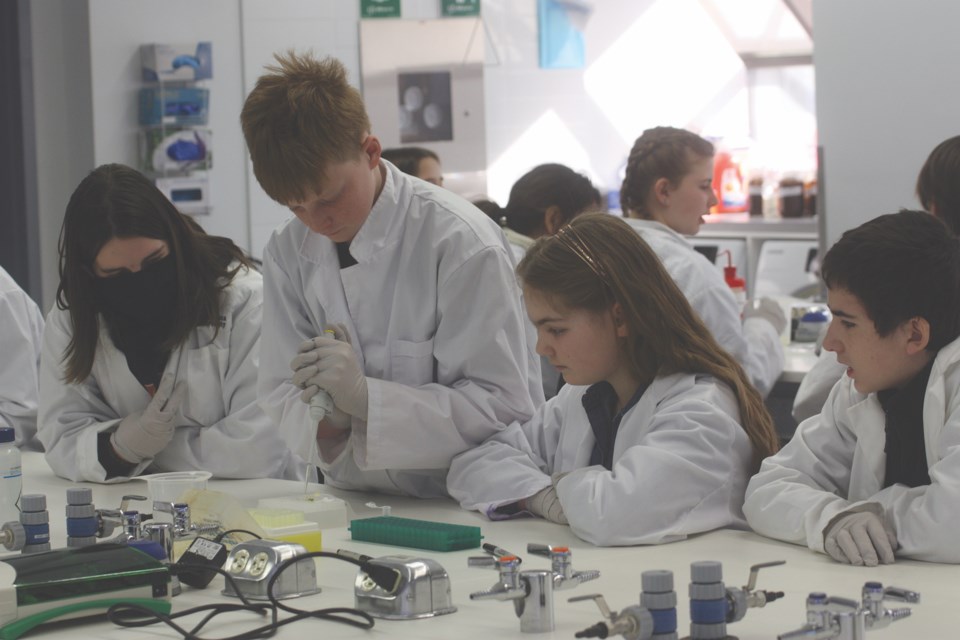ATHABASCA – We all want to know “whodunnit,” as the plethora of CSI spinoffs on TV will attest.
On April 4 and 5, Grade 6 students from Landing Trail Intermediate School (LTIS) got the opportunity to try solve a mystery, using polymerase chain reaction (PCR) tests to try and match mock DNA samples to crime scene data.
Carmen Allen, who developed the lab through her work with Athabasca University two years ago, said that she was hoping to spark an interest in science for the students. “I really want them to be excited about science, and to find out what they can do with it. My main objective is to give these kids some opportunities that they wouldn’t have otherwise.”
As part of the exercise, several suspects corresponding to the students’ actual teachers were identified. Students then split into groups to learn how to conduct the tests on four suspect DNA samples, as well as the “crime scene” sample that had been collected. Using an actual pipette, students were able to get their samples ready to be sent off to the lab.
On the second day, students went over to AU to learn about what would come next in an actual lab setting. Here they were able to finalize the PCR tests, applying loading dye to the samples, which allowed them to track the DNA visually.
It took a day or two for the samples to be ready for analysis, at which point the kids were able to solve the mystery and figure out the culprit behind the fictional crime.
Allen, who is currently pursuing her PhD at the Department of Biological Sciences at the University of Alberta, said that an exciting component of the lab for her was the realism. “We use PCR tests all the time, and it then gets sequenced, which we aren’t doing here. But what the students are doing here is directly applicable to what we do in science.”
Treena Michalski, who teaches Grade 6 at LTIS, said that the program acted as a type of bridge between two units in the curriculum.
“The curriculum has an evidence and investigation unit, so they’re often looking for clues, trying to solve crimes using their observation and inference skills. We don’t specifically teach DNA, but they do learn it later on, so we use this (lab) as a bridge for that.”
Michalski, who took a class through the lab last year, said that the kids really took to it. “Solving the crime and incorporating it with the teachers at the school, getting them to associate one of the teachers with being a criminal based on what they’re learning in class has been really fun, and I think that really connected it and made it meaningful with the kids.”



